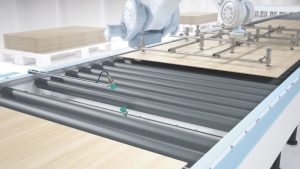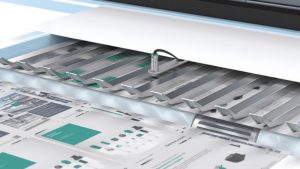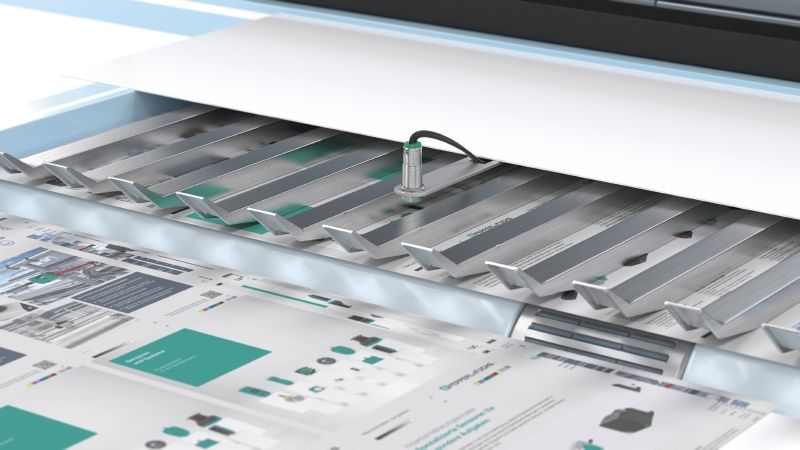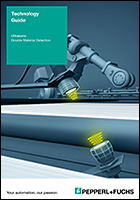3 Factors that Influence Double Sheet Detection
Double sheet sensors are used to monitor layers of materials as they are fed into machines. While the default settings for Pepperl+Fuchs’ double sheet sensors are suitable for over 90% of all usable materials, it is important to consider the following factors before choosing which settings to use: environmental conditions, material characteristics, and alignment accuracy. Each of these can affect measurement accuracy in double sheet detection and must be accounted for.
1. Environmental Conditions
Environmental conditions like air temperature, humidity, distance above sea level, and barometric pressure can affect the signal amplitude measured by the receiver of double sheet sensors. The most influential of these factors are changes in air temperature and barometric pressure, which must be taken into account when configuring the working range for double sheet sensors. In splice and label detection applications, teaching-in the appropriate background material eliminates these influences.
2. Material Characteristics
Material characteristics can also affect the measured sound amplitude. For example, homogeneity, grammage, volume, and recycled content influence attenuation in paper detection. Since paper is a collection of fibers, the accumulation of fibers can differ from sheet to sheet. Even within a single sheet of paper, some areas have more clusters of fibers, and others have fewer fibers and more air. This means that different parts of a sheet of paper can attenuate the sound amplitude of the double sheet detection differently.
Paper grammage, or weight, also affects attenuation. Higher grammage paper will attenuate ultrasonic signals to a greater extent. In other words, thicker sheets of paper or cardboard absorb sound signals more than thin sheets. Volume has a similar effect on the absorption of ultrasonic signals. High-volume paper, like that used in book printing, has more air between the individual fibers, and thus greater sound absorption, than copy paper.

Ultrasonic sensors in the double material control of cardboard boxes and packaging material

Ultrasonic sensors for double sheet detection of printed sheets
3. Sensor Alignment
Finally, simple misalignment of the sensor can influence measurement, especially when the emitting and receiving units are separate. Since the most sensitive area of the ultrasonic sensor is at the center of the transducer, the center of the sound beam must be aligned with the center of the receiving transducer. Doing so ensures the largest possible amplitude, widest possible range of materials, and largest possible reserve of tolerances are measured. Automatic alignment of the emitter and receiver is possible with mounting brackets from Pepperl+Fuchs. A mounting aid is also available for alignment of self-designed brackets.

The exact alignment of the transmitter and receiver unit plays a decisive role in double material control.
Double sheet detection is a precise task that requires reliable sensing solutions set for the unique demands of each application. To learn more which factors to consider when selecting and installing double sheet sensors, download the Pepperl+Fuchs Ultrasonic Double Material Detection Technology Guide.
Subscribe to our newsletter and receive regular news and interesting facts from the world of automation.

